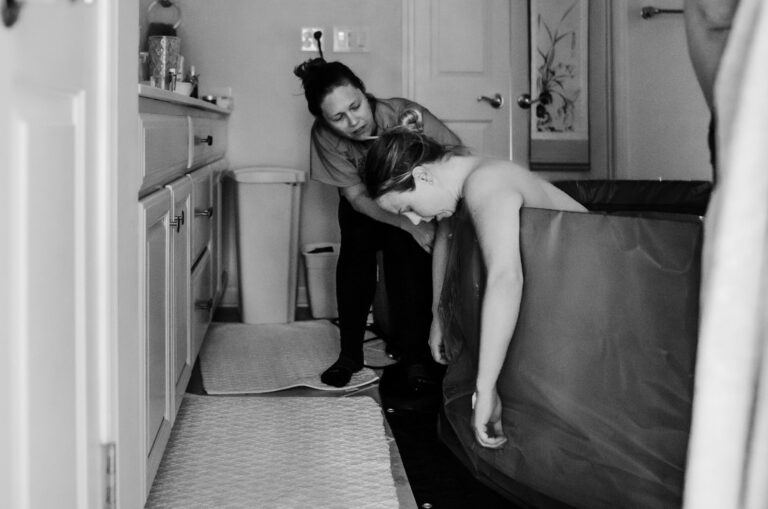Juggling work calls, tiffin preparation, school runs, fever checks, and the perpetual “is tomorrow the fancy dress day?”—does it sometimes seem like daily life is a finely spun web that only you hold together? If mental checklists are racing through your mind while folding laundry at midnight, or you’re pondering if managing family schedules, emotional meltdowns, and chores truly falls on just one pair of shoulders—welcome to the complexities of parental load distribution. In many households, questions of fairness, hidden stress, and persistent imbalance can emerge as children grow. Medical studies point out a strong link between invisible workload and parental well-being, yet solutions can seem as elusive as a toddler at bath time. Let’s untangle where the imbalances arise, how science views their impact, and—most importantly—what practical steps exist to restore balance and support every family member.
The Multifaceted Face of Parental Load Distribution
Parental load distribution doesn’t merely concern dividing school drop-offs or dinner duty. Rather, it envelopes every unseen thread connecting a family’s mental, emotional, and physical functioning. The “mental load”—a term now well-anchored in both research and popular conversation—captures the constant anticipation of needs, from ordering school supplies on time to remembering vaccination due dates, and providing a cushion for each family member’s feelings at day’s end.
Persistent medical studies underscore that mothers globally handle the lion’s share, carrying nearly 70% of these “cognitive” and invisible tasks, despite progress in societal attitudes. Such imbalance, far from being just a logistical quirk, can trigger chronic exhaustion, sleep disturbances, altered hormone levels (think: cortisol spikes from ongoing stress), and deep wells of anxiety. When primary caregivers are stretched, the ripple reaches the children—emotional distances can widen, and even attachment and social development may be affected.
Why Is There an Imbalance? Societal, Medical, and Structural Perspectives
Tradition lingers; the expectation that mothers should orchestrate home and emotion, while fathers focus on income, is written subtly into many family scripts. And data—across time-use surveys and clinical interviews—reaffirms this: when both parents work outside, mothers still handle most domestic duties. The “dad blessing” effect—in which fathers are celebrated for basic care or a rare lunch prep—highlights how unequal recognition persists.
Physicians warn it’s not just about “helping out”—the sustained division of invisible labour, not seen, noted, or appreciated, creates the perfect breeding ground for burnout. Biological stress responses (chronic elevation of blood pressure, disrupted immunity) can take root, silently undermining parental health.
What prompts this spiral? Habitual routines set during maternity leave, policies that grant more leave to mothers, work patterns, and even guilt over shifting traditions—all mix into the everyday. Studies show that after parental leave, mothers remain default “experts”—shouldering both emotional and logistics loads, while fathers often gravitate towards leisure tasks or play, reinforcing old models.
What Does the Parental Load Actually Involve? A Dissection
Parental load distribution unfolds in three interlinked dimensions—each with unique physiological and psychological stakes.
- Physical tasks: The visible grind—meals, cleaning, baths, managing logistics, navigating traffic snarls for extra classes. When one parent steers most of these, physical fatigue and risk of chronic pain escalate.
- Emotional and mental load: This is the perpetual state of being “on call.” From scheduling vaccinations (and remembering the paediatrician’s advice) to comforting a child through anxiety or mapping out birthday party checklists. Emotional labour not only exhausts—it can disrupt sleep cycles, trigger overproduction of stress hormones, and lead to symptoms medically recognized as parental burnout: persistent fatigue, irritability, even somatic complaints.
- Educational, financial, and social roles: Supervising homework, budgeting, staying proactive about dietary guidelines, and managing connections with grandparents or friends—all merge into a demanding cognitive suite.
What does medical science reveal? Chronic, invisible effort taxes mind and body—biomarkers like cortisol (the stress hormone) surge, sleep disturbances multiply, and immunity falters. The price? Increased rates of anxiety and depression in parents, with children echoing this stress in their emotional responses.
Measuring What Is Invisible: Tools and Insights
How can families really “see” what’s happening? Quantitative approaches—like diary keeping or using parental load distribution calculators—help map who’s doing what. But researchers strongly caution: numbers alone miss emotional labour. Qualitative techniques, such as open discussion and narrative accounts, reveal where the real gaps dwell.
Why does this matter medically? Once invisible work is named and articulated, stress levels decline. Recognition fuels positive psychological feedback—dopamine pathways (your body’s “reward” system) become activated, promoting motivation and relationship satisfaction. A strong case for ditching silent endurance in favour of transparent conversation.
Consequences of an Imbalanced Parental Load Distribution
What if nothing shifts, and the imbalance lingers? The spiralling effects are well-documented:
- Parental health: Surgeons and psychologists note that ongoing stress disrupts the hypothalamic-pituitary-adrenal (HPA) axis, impacting sleep, immunity, and even heart health. There’s a sharp uptick in exhaustion, chronic muscle pains, persistent headaches, and digestive upset.
- Child development: Emotional tension at home can blunt neurodevelopmental milestones and set the stage for higher anxiety and behavioural struggles in children, as established by paediatric mental health research.
- Relationships and careers: Couples report sharp drops in satisfaction, rising arguments, and intimacy issues when one parent feels chronically unsupported. Professionally, mothers more frequently reduce work hours or exit the workforce, amplifying gender disparities and financial vulnerabilities.
Restoring Balance: Practical Approaches to Parental Load Distribution
Ready for actionable advice? The shift begins not with grand declarations, but with mindful micro-changes and open acknowledgment of effort.
- Visualize tasks: Start by listing or using a mobile family organiser app—making all responsibilities, not just laundry and bedtime, visible. Apps like Maydée or TipStuff? A small investment for a big impact.
- Acknowledge the invisible: Often overlooked, simply articulating who keeps the family calendar or remembers the next dental visit sparks understanding, not friction. When fathers return to work, encourage them to step into invisible roles too.
- Active dialogue: Empathic, non-judgmental conversation delivers dramatic medical benefit by lowering stress hormones and building trust—both potent for mental health.
- Rotate and adapt: Rather than a rigid 50-50 split, match tasks to preference and skill, with periodic reviews to prevent resentment and fatigue. This flexibility, lauded in clinical environments, helps families evolve rather than stagnate.
- Tap external support: Whether it’s asking extended family for help, leveraging community networks, or—when feasible—outsourcing chores, distributing load outside the core parent unit aids resilience.
Policy and Larger Societal Shifts: The Long Game
The medical community and social scientists agree—family-level strategies thrive in environments where policies reinforce shared responsibility.
- Equitable parental leave: Coparental leave, equaling duration and access for both parents, catalyses shared expertise, distributing the mental and physical load from infancy onward. International health datasets show families in such systems report lower maternal burnout and stronger child well-being indicators.
- Flexible work options: Remote and flexible-hour arrangements allow parents to blend work with childcare, reducing cumulative exhaustion.
- Accessible childcare and community support: Investment in reliable childcare correlates with better mental health outcomes for both parents—this is repeatedly demonstrated in epidemiological surveys.
Government incentives—tax benefits, workplace norms that encourage shared parental duties—build a culture where parental load distribution becomes a family value, not a solitary struggle.
The Evolving Role of Fathers
Not just reserves for play and hobbies, fathers now have shown, through clinical observation, that proactive involvement in planning, emotional support, and household management benefits the entire family. Dismantling “default parent” stereotypes isn’t a one-off conversation. It’s an ongoing, conscious practice—one that models healthier relationships and greater well-being for the next generation.
Diverse Families, Unique Journeys
No two families look identical. Single parents bear unparalleled weight, highlighting the worth of support networks. Same-sex, blended, or multicultural families might invent new sharing systems, blending multiple influences. Paediatricians and therapists alike urge: acknowledge your unique context, validate its realities, and build routines tailored to your strengths.
Key Takeaways
- Parental load distribution weaves together daily chores with invisible mental and emotional efforts, shaping family life behind every routine.
- Health research shows that imbalanced distribution correlates with burnout, emotional fatigue, and impacts on children’s well-being and development.
- Open visibility—listing, discussing, reviewing—brings powerful relief, supporting both physical and mental health in parenting.
- Start with small actions: visualise and rotate tasks, talk honestly, and consider external support to relieve pressure.
- Long-term improvement flourishes with policy support: equitable leave, flexible work, and accessible childcare amplify the shift toward shared responsibility.
- Each family builds its own solutions—what matters is conscious, compassionate adaptation.
- Pour des conseils personnalisés et des questionnaires de santé gratuits pour les enfants, téléchargez l’application Heloa.
Questions Parents Ask
How can parents check if their parental load distribution feels fair or balanced?
Wondering who really holds the reins at home? Start by simply mapping out all ongoing responsibilities. Not just chores—include planning, emotional support, those little reminders. Use a mental load checklist or a parental load distribution calculator (many are free online) to visualise the hidden imbalances. Honest talks, even short ones, help everyone express their sense of what’s too much or just right.
What’s a realistic way to improve parental load distribution every day?
Try swapping roles: if you’re the usual breakfast maker, let your partner handle it one weekend, and switch to bedtime. Shared digital task lists make sure nothing gets missed. Set a weekly “check-in” to ask: what’s working, what feels heavy? Keep it flexible—preferences and energy change with time and circumstance.
Are there warning signs that the parental load is overwhelming one parent?
Absolutely. Fading patience, regular fatigue, trouble sleeping, or that constant sense of being overloaded may crop up when one person does too much for too long. Withdrawal, snapping at small things, or feeling unappreciated can also surface. If these signs intrude, pause and discuss with family—or reach out to an extended support group. Sometimes, just voicing the challenge lightens the load and helps everyone reset.









